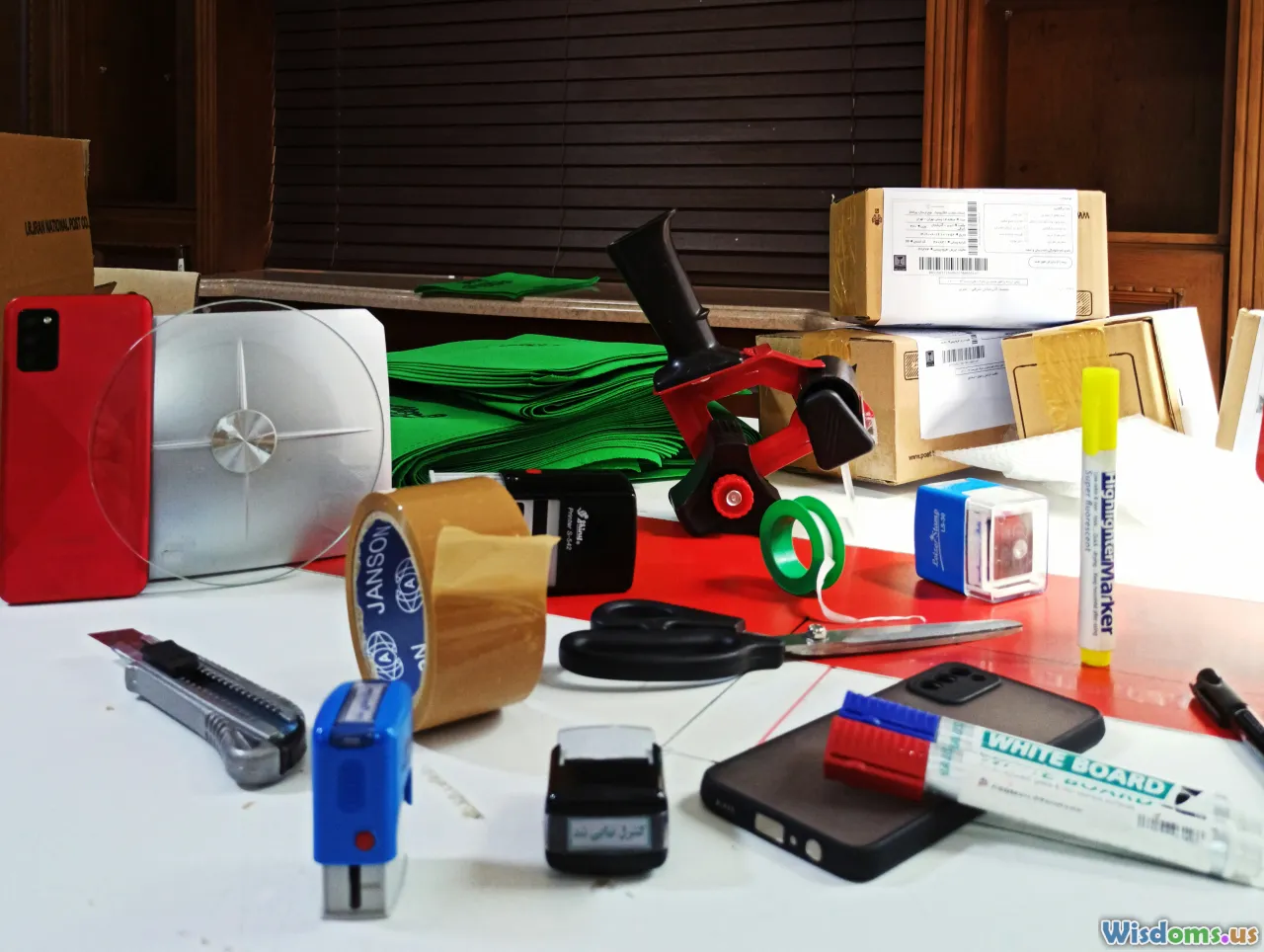
How I Doubled Retention with Remote Onboarding Strategies
13 min read Discover remote onboarding strategies that doubled employee retention, including tools, processes, and real-world examples for effective virtual integration. (0 Reviews)
How I Doubled Retention with Remote Onboarding Strategies
Employee retention is a critical metric for organizational success—especially in today's increasingly remote work environment. After transitioning to a fully distributed team, our organization confronted wide-ranging challenges, from waning engagement to startlingly fast turnover within new hire cohorts. Shocked by these early trends, we re-envisioned onboarding as a pivotal experience. The result? We doubled our retention rate for remote hires in just one year. Here’s how we did it, and how you can, too.
Rethinking Onboarding: From Transactions to Transformations

The old model of onboarding often meant paperwork, canned video greetings, and ticking off checklists. In a virtual landscape, this transactional approach falls flat. To truly impact retention, onboarding had to become transformative—a program designed to foster belonging, context, and momentum right from day one.
Key insight: Gallup research indicates employees overwhelmed or underwhelmed during onboarding are 2.6 times more likely to leave within 18 months. Recognizing this, we decided our onboarding couldn't simply be digitized; it had to be redesigned for remote first.
Concrete changes we made:
- Replaced “one-and-done” orientation calls with a month-long immersive onboarding sprint.
- Separated legal/formal paperwork from culture, connection, and upskilling phases.
- Set explicit onboarding goals related to employee sentiment, not just proficiency or forms completion.
- Involved cross-functional leaders—engineering, HR, finance, and product—during onboarding to drive context and connection.
Example: Before these changes, new hires reported their onboarding averaged 2.9/5 for comfort and preparedness. Within nine months of the overhaul, this jumped to 4.2/5—directly correlating with higher engagement and retention.
Designing a Welcome that Sticks: First Impressions Remotely Matter More

Because remote hires seldom set foot in a physical office, their first impressions exist entirely in digital and emotional realms. Starting with a deliberate welcome kit and experience stack can separate meaning from monotony—and impact how long employees stay.
How we did it:
- Mailed personalized welcome kits including high-quality noise-canceling headphones, a company-branded notebook, and a handwritten note from their manager.
- Hosted a "Life at Our Company" kickoff call with icebreakers designed to forge early team bonds, not just rehash the company values slide deck.
- Launched a "Buddy Program," pairing new hires with experienced colleagues for their first 30 days. Buddies received templates for regular check-ins, discussion topics, and resource sharing.
Evidence-backed result: Hires who participated in the Buddy Program had a 20% higher 6-month retention rate compared to peers who onboarded without a buddy the previous year.
Curated, Not Generic: Crafting Personalized Learning Journeys

Remote onboarding easily devolves into self-paced video overload or muddled expectations. Shifting to personalized, interactive onboarding programs proved crucial for engagement and retention.
Strategy in action:
- Each new hire’s onboarding calendar was customized with pre-planned development sessions based on their role, department, and career goals established during recruiting.
- We implemented milestone-based learning objectives: e.g., by the end of Week 2, marketers ran a mini campaign review, while engineers deployed a test module.
- Paired early feedback loops with 1:1 coach check-ins—no "feedback deserts" until first performance reviews.
- Leaders modeled transparency, sharing personal onboarding mishaps and growth stories during group AMAs, making it safe to ask questions and learn out loud.
Key stat: Over 90% of employees rated their onboarding program as “relevant to my needs” (up from 53% the previous year), with the upshot that more new hires initiated additional internal learning opportunities at month three.
Building Connection in the Absence of Corridors

A common misconception is that remote work inherently breeds isolation, threatening retention. Through deliberate initiatives, we fostered stronger internal networks than traditional in-person setups often achieve.
Connection-building tactics:
- Established recurring “Digital Coffee Hours” and “Open Office” virtual drop-ins, where new hires and veterans mixed outside formal projects.
- Spun up cross-departmental interest groups—like book clubs and design thinking labs—that met online weekly.
- Encouraged "virtual ride-alongs," where a new hire could shadow a peer on customer calls or project workshops, even outside their usual purview.
- Integrated informal Slack channels: #random, #pets, #travel-memories, and “Shoutouts” for peer recognition in real-time.
Concrete outcome: Within six months, participation in at least two connection-driven programs was linked to a 33% increase in self-reported workplace satisfaction and a halving of early departures.
Making Managers Accountable—and Empowered—for Retention

No onboarding program survives first contact without active managerial buy-in. We found inconsistent manager involvement as a silent killer of remote retention.
How we 'grew' better managers:
- Trained all people leaders on remote onboarding facilitation, emphasizing emotional intelligence, check-in frequency, and empathy skills.
- Required structured weekly 1:1s between managers and their new reports for the first 90 days, using shared agenda templates with questions about work and well-being.
- Deployed real-time pulse surveys asking, “How supported do you feel by your manager so far?” Responses flagged managers for proactive support or recognition.
- Made people managers directly accountable for new hire ramp-up and retention, tying these to their team goals and performance reviews.
Manager testimonial: One product manager noted, "Staying tightly connected with new hires isn't just what HR asks—it's now a core part of my own success metrics. Since then, the whole vibe of my team has changed. People share more, and we troubleshoot faster."
Measuring Success and Iterating Quickly

Effectiveness can't be gauged by intuition alone. We implemented data-tracking processes focused on behavioral, qualitative, and business-impact metrics.
Measurement tactics:
- Tracked not only turnover within first-year cohorts, but also: NPS (Net Promoter Score) at onboarding milestones, post-program surveys, participation rates in onboarding events, buddy pair engagement, and peer-submitted feedback.
- Focus groups gathered deeper insights from departing employees and successful onboardees, so we could adapt programs in real-time.
- Used structured manager debriefs to collect suggestions for continual improvement after every onboarding sprint.
Year-over-Year Results:
- 12-month new hire retention improved from 53% to 81%.
- Onboarding NPS rose from +21 to +60.
- Reported sense of belonging scores doubled after six months for remote hires.
These analytics weren’t just chest-thumping stats. They directly informed leadership budgeting, scaled up our onboarding resources, and justified ongoing iterations.
Pitfalls to Avoid: Lessons from What Didn’t Work

Our journey wasn’t without trial and error. Not every initiative succeeded.
Things we learned NOT to do:
- Don’t over-schedule: Some onboarding pilots bombed because we filled the first week with back-to-back calls, overwhelming new hires.
- No value in generic portals: A "one size fits all" self-service digital portal, minus human interaction, resulted in completed checklists but disengaged and confused employees.
- Ignore timezone equity at your peril: Early global onboarding calls left our APAC recruits feeling like afterthoughts, harming retention in that region until we staggered content and created timezone-friendly cohorts.
Acknowledging and updating failed strategies was essential to keeping trust and transparency at the heart of onboarding.
Actionable Steps to Implement in Your Own Organization

Ready to overhaul your remote onboarding to boost retention? Here’s a roadmap distilled from our experiences:
- Define Outcomes That Matter
- Set retention, engagement, and readiness targets for onboarding cohorts.
- Segment Onboarding by Phases
- Separate compliance and logistical tasks from culture and connection rituals.
- Set Up Timezone-Friendly New Hire Cohorts
- Launch start dates and live events staggered by global region to increase inclusivity.
- Empower Managers and Set Accountability
- Train managers explicitly for remote onboarding, and evaluate them on hiring success.
- Institutionalize Connection
- Mandate buddy programs, regular open-channels, and micro-bonding moments.
- Personalize Each Learning Journey
- Customize onboarding schedule and content for each hire.
- Continuously Collect Data and Feedback
- Use regular pulse surveys, NPS, and manager input to improve every onboarding cycle.
Adopting even a handful of these steps can yield outsized gains in loyalty and engagement throughout your distributed workforce.
Crafting remote onboarding as a strategic, human-centered process transformed our organizational DNA. By resisting a check-the-box mentality and emphasizing authentic connection, accountability, and continuous improvement, your company can achieve retention numbers that turn remote onboarding challenges into unprecedented workforce stability. The extra effort is an investment that, as our results show, delivers compounding returns long after the hire’s first day.
Rate the Post
User Reviews
Popular Posts















